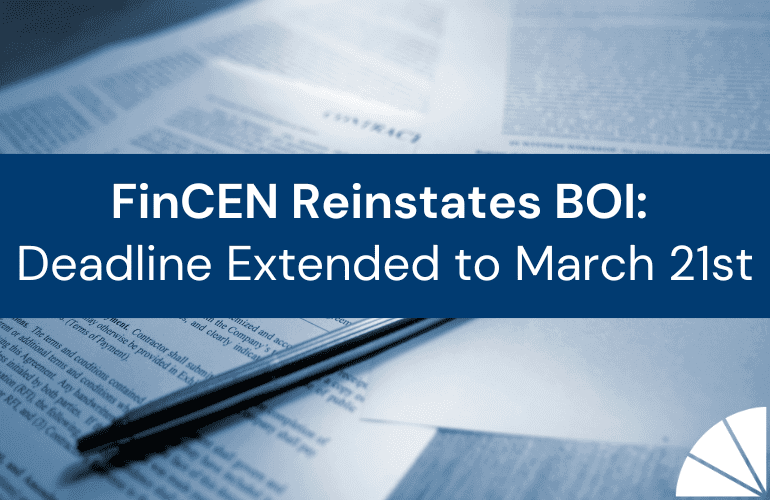
401(k) plans are a great incentive to recruit and retain talent while ensuring employees plan for retirement. Unfortunately, the day-to-day administration and oversight of the plan, especially for small businesses, often becomes overlooked. Plan sponsors must adhere to significant compliance requirements instituted by both the DOL and IRS that must be followed by plan sponsors. All plan sponsors (employers whose employees are participating in the plan) have a fiduciary responsibility to act in the best interest of its participants. As such, it is important to ensure that your 401(k) plan complies with the various regulatory requirements, and your exposure is limited regarding the compliance requirements. Below is a list of five areas that are often not in compliance, as well as some basic strategies to ensure that your plan is properly administered:
1. Eligibility
Overview
In the simplest of terms, eligibility relates to whether individuals are properly allowed or disallowed from participating in the plan, as described in the plan document. Each plan may have different eligibility criteria. Typical criteria may include minimum service requirements or minimum age requirements, as well as specified entry dates such as monthly, quarterly, or semi-annually.
How to Reduce Exposure
It is important to review the plan document and determine exactly what the eligibility requirements are for your specific plan. As eligibility requirements are typically based on age, start date, or hours worked, it is important to keep robust records of birth date, hire date (such as I-9’s) and payroll information in order to ensure that each employee is treated properly and given the opportunity to participate in the plan. Auto-enrollment is a popular feature to ensure that all eligible employees have been given the opportunity to participate in the plan. If an eligible employee does not elect to participate in the plan, you should maintain a copy of their signed decision not to participate.
Repercussions of Noncompliance
If an eligible employee was not afforded the opportunity to participate, the plan sponsor may be required to fund a portion of what would be the employee deferral based on an average contribution rate of the plan in addition to any employer matching contribution that would have been funded. The plan sponsor is also required to fund lost earnings on such missed contributions.
2. Definition of Compensation
Overview
Compensation can also be defined differently in each plan depending on the plan document. The definition can be as simple as taxable wages, or can be customized to the individual plan, and may exclude certain types of compensation. This definition must be followed consistently for all employees and is the primary driver of the contributions that employees will make. Accordingly, this definition should be well thought out by the plan sponsor when creating the plan.
How to Reduce Exposure
Make sure you review your plan document and compare it to your payroll records on a regular basis. Most payroll service providers allow for customization of the software to allow for specific pay codes to be included or excluded from the calculation of employee contributions as necessary. It is important to coordinate with the payroll provider and the payroll department to ensure that each pay code is treated properly as it relates to the definition of compensation.
3. Timely remittances
Overview
Department of Labor rules state that contributions must be remitted to the plan, “As soon as reasonably segregable from general assets, and in no event can the deposit be later than the 15th business day of the following month.” This means that amounts should be deposited into the plan as soon as is administratively feasible for the contribution to be calculated and wired into the plan. As there is no black and white definition of timeliness, the DOL states the shortest time it has historically taken to remit the funds will be considered timely.
How to Reduce Exposure
The easiest way to ensure timely remittances is to develop a step-by-step process for each payroll period that is performed by the same individual(s) each pay period. This ensures that the same procedures are followed and will generally result in remittances during the same timeframe each and every time payroll is run. Coordinate with your plan’s third-party administrator or custodian to discuss how your remittances can be simplified and made in a timely manner.
4. Monitoring of Investment Options and Fees
Overview
As the fiduciary, acting in the best interest of the participants demands proper monitoring of the plan’s investments and fees charged to the plan. This means maintaining diversified investments and regularly considering different investment options and service providers to ensure participants are maximizing the return on their investments.
How to Reduce Exposure
Form a committee designated to oversee the compliance of the plan that meets regularly to discuss the plan’s operations, including a review of the fees charged by the services providers and a review of investment performance. Minutes should be kept for each of these meetings documenting the discussions held. If it’s not practical to form a committee, document the review by the designated individual, including the date and what steps were taken to evaluate the investment performance and fees charged to the plan. Also, it is common for a plan sponsor to use an investment advisor to help with determining the reasonableness of the investments, and to suggest alternatives for underperforming investments.
5. Timely Filings
Overview
Each 401k plan is required to file an annual Form 5500 by the last day of the seventh month after the plan year ends (July 31 for a calendar-year plan). This can be extended by request (using the Form 5558, which will extend the deadline 2.5 months (October 15 for a calendar-year plan). If the plan is considered a “large plan” (generally 100 eligible participants at the beginning of the year, or 120 participants for a first-time large plan filer), the plan is required to be audited, and the audited financial statements are required to be attached to the 5500.
How to Reduce Exposure
Typically, the plan’s third party administrator or the custodian of the assets will complete the Form 5500. However, the plan administrator is required to review and sign the Form 5500 before it is submitted to the IRS. Plan sponsors should communicate with administrators early in the year and provide all necessary information and documentation they need to complete the form. If a plan requires an audit, it is critical to start the process early in the year as well in order to complete it in advance of the 5500 filing deadline.
Plan sponsors can be liable for missed employee and employer contributions and earnings on those contributions in the event that an employee is not allowed to participate in the plan, the incorrect definition of compensation is used, or the remittances to the plan are not made timely. Fiduciaries that do not document their monitoring of investment performance and investment fees can be held personally and financially responsible for participants’ losses in a plan, so it is important to document oversight in meeting fiduciary responsibility. Finally, any of these issues will add administrative time to your organization and could result in additional fees or penalties from the Department of Labor or IRS.
Administrating a 401(k) plan can be complicated, and it’s important to maintain compliance. If you have questions about your plan, contact your auditor. If you are looking to switch auditors, LGA’s Employee Benefit Plan Audit Services team is here to help!
Written by Adam Shaker





